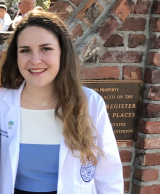Phenotype of Tumor-Associated Antigen Presenting Cells after Blocking Indoleamine 2-3-Dioxygenase

Background
Previous research has shown that tumors commonly manipulate their environment to hide from a patient's immune system. One such pathway that is commonly exploited by a variety of tumors is the indoleamine 2-3-dioxygenase (IDO) pathway. IDO activity has been shown to suppress a patient's immune system by activating regulatory T cells (Tregs). Once activated, Tregs inhibit the activity of killer T cells (CD8) and helper T cells (CD4), which are part of the adaptive immune system. Tregs also reduce inflammatory responses by producing anti-inflammatory interleukins (Il-10, TGF-B), which target both the innate and adaptive immune systems. Blocking IDO destabilizes Tregs, removing one mechanism by which IDO maintains immunosuppression. Our collaborators in the Munn lab have shown that the phosphatase and tensin homolog (PTEN) lipid phosphatase pathway can stabilize the immunosuppressive functions of Tregs, and upon inhibition of the PTEN pathway, Tregs are converted into pro-inflammatory helper cells (ex-Tregs) within the tumor. Because IDO is upstream of the PTEN pathway, it activates PTEN to activate Tregs. When the PTEN pathway is blocked, the stimulatory antigen presenting cells (APCs) are able to express phenotypes of CD11c, Ly6c and CD103. Based on the relationship between IDO and PTEN, we hypothesize that blocking IDO will lead to expression of the same population of stimulatory APCs (CD11c, Ly6c, CD103) to maintain a Treg deficient environment.
Project Goal
The project will use immunohistochemical staining of melanoma (B16F10) tumor slices from B6 congenic murine models, eliminating the risk of rejection of tumor cells. There will be tumor samples from murine models treated with radiation, with and without 1-methyl tryptophan (1MT, an IDO blocker), chemotherapy with and without 1MT, and a combination of radiation and chemotherapy with and without 1MT. Other tumor models including glioblastoma (GL261) and lymphoma (EL4) implanted into congenic murine models will be studied with immunohistochemical staining as well.
Mentored by Dr. Theodore Johnson
Augusta University Research Institute, Augusta, GA

